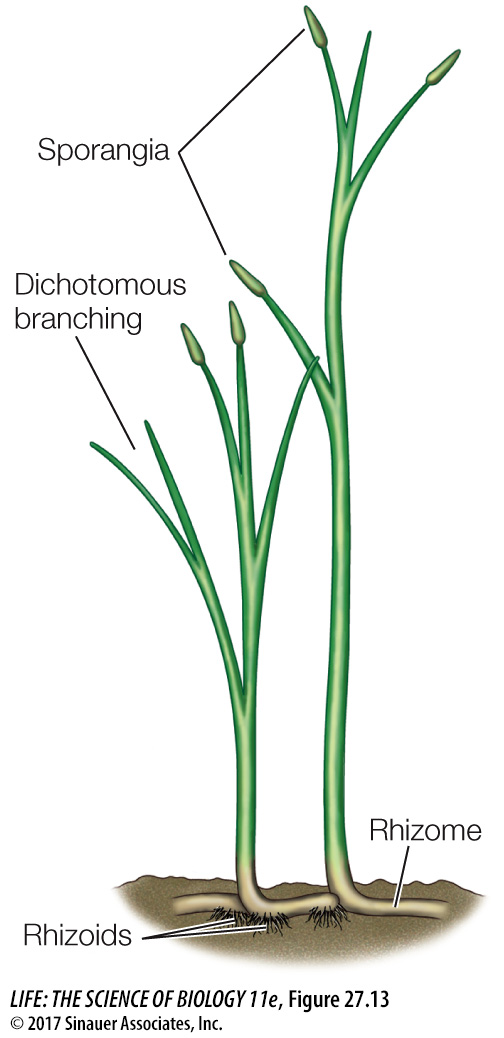The closest relatives of vascular plants lacked roots
The closest relatives of living vascular plants belonged to several extinct groups called rhyniophytes (Figure 27.13). The rhyniophytes were one of a very few types of land plants in the Silurian period. The landscape at that time probably consisted mostly of bare ground, with mats of nonvascular plants and stands of rhyniophytes in low-lying moist areas. Early versions of the structural features of the vascular plant groups appeared in the rhyniophytes of that time. These shared features strengthen the case for the origin of all vascular plants from a common nonvascular land plant ancestor.

Figure 27.13 An Ancient Relative of the Vascular Plants The extinct rhyniophyte Aglaophyton major lacked roots and leaves. It had a central column of xylem running through its stems but no true tracheids. A horizontal underground stem called a rhizome anchored the plant. The dichotomously branching aerial stems were less than 50 centimeters tall. Some stems were topped by sporangia.
Rhyniophytes did not have roots. They were apparently anchored in the soil by horizontal portions of stem called rhizomes, which bore water-absorbing unicellular filaments called rhizoids. These plants also bore aerial branches, and sporangia—homologous to the sporangia of mosses—were found at the tips of those branches. The branching pattern of rhyniophytes was dichotomous; that is, the apex (tip) of the shoot divided to produce two equivalent new branches, with each pair of branches diverging at approximately the same angle from the original stem.
